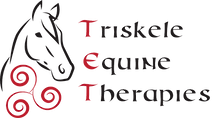
People often talk about the maturation of the horses' skeleton and not to work them too early because you might cause soundness problems in the future (myself included). Yet the uptake of this information and translation to practice has been slow. I think part of this is because people don't have a good visual of exactly what it means when a horse has an open growth plate, and when their bones aren't finished maturing.
So, what is an open growth plate? This is a colloquial term for the epiphyseal plates found in long bones and the ends of vertebrae. They are constructed of cartilage and are the locations from which the bone grows, allowing the foal to grow in height and length. Once the bone matures the hyaline cartilage will be replaced with bone and become the epiphyseal line. In vertebrae the cartilage is never completely replaced by bone.

Image credit: Equine Osteology Victoria
Cartilage is much more flexible than bone and also far weaker. When the bones still have plates, there is a lot more opportunity for movement in the structure. This is part of the reason why many limb deformities might be corrected as a foal but cannot be corrected as adult. Through structural force and postural alterations, it's possible to influence the way the bone grows, however once the plate ossifies it's too late to make those changes.
These plates can be damaged far easier than the surrounding tissue and when they are it can cause lifelong, or future lameness. The plate may be damaged by direct trauma, excessive concussive forces, rapid growth, and protein rich diets. Now concussion and loading are required to mature bones and encourage the closing of the plate, but excessive loading and concussion can lead to epiphysitis, lesions and inappropriate bony growth which can lead to soundness issues in the future. Damage to a growth plate can interrupt the natural maturation process of the structure and in some cases may result in plates that never completely seal, which can be a source of ongoing pain and weakness.
For the above reasons it's important to make sure the young horse has age-appropriate work. Which in my opinion means more groundwork and less to no ridden work when they're younger.
So at what age do the growth plates finish?
The age ranges are quite varied between different bones and fusion begins from the ground up. By the time the horse is at least four years the limbs are mostly finished. However, the pelvis still has at least another year after that. The vertebrae are some of the last bones to finish growing, with a maturation age commonly recorded between five and a half to six years. Male horses and taller horses show a slower maturing rate overall, putting them at the upper end of the time needed, and sometimes over by years.
Open growth plates as seen externally and on x-ray.

Image credits: Pexels Veterinarian Associates Equine American Farriers Journal
Mature horse legs and xrays.

Image credits: Pexels Horse Side Vet Guide
Ultimately the age at which to commence ridden work is individualistic between horses and their rate of maturation. However, there is no harm in starting a youngster a little later.
So now you know what it means when someone says a horse's growth plates are open.


